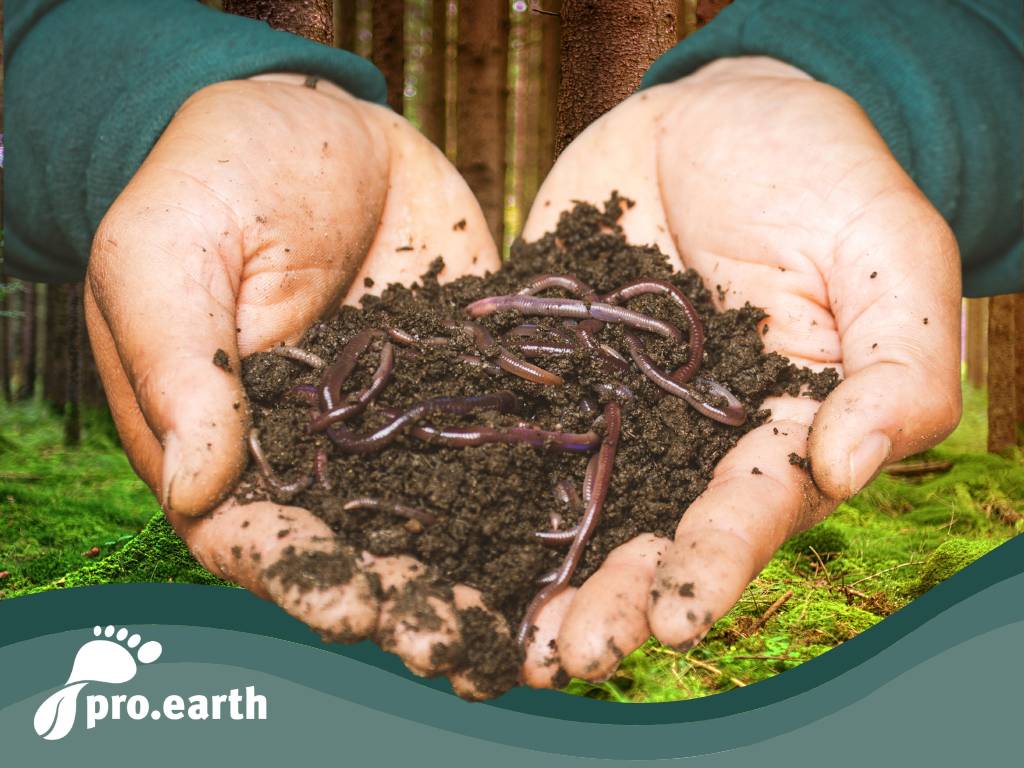Earthworms - the saviors of the forests

Our forests are under pressure. Too intensive mechanical use to meet the rapidly increasing demand for wood, the decades-long dominance of one tree species, which is now being radically decimated by bark beetles, heat and drought. What we need are climate-resistant mixed forests with a mixed age structure. The forest soil plays a central role in this and with it the earthworms living in it.
These build up a humus layer, aerate the soil and help to greatly increase its water storage capacity. As part of the EU pilot project "Future Forests" in eastern Bavaria, the improvement of the ecosystem services of forests is being investigated using the innovative approach of soil management.
Those who make the forest strong, make strong climate protection. Because every stable hectare of forest protects the climate, provides a habitat for animals and plants and gives future generations a perspective.Federal Minister for Forests Cem Özdemir
It's all about the mix
A balanced mix of tree species is an important prerequisite for a good earthworm population in the forest. "We need to turn coniferous forests into highly stable permanent forests with mixtures that result in healthy soil," says forester Ludwig Pertl from the "Future Forest" project in the Landsberg district.
According to Pertl, fine-rooted and deep-rooted deciduous trees such as maple, ash, elm, lime, alder, rowan, wild cherry and wild service tree would perform excellently. Among the conifers, the shallow-rooted spruce, which is already struggling with the increasing drought, is the least suitable. Fir is somewhat more suitable. However, there is no one-size-fits-all solution, as a lot depends on the location. Nevertheless, it can be assumed that at least a 20% share of noble hardwoods in a mixture with beech, fir and spruce is required to achieve sufficient earthworm density in the forest floor.
In addition, it is important to ensure the stability of the forest during the conversion and to leave enough tall old trees standing "so that we still get enough precipitation during the growing season", says Pertl. Careful management, including careful handling of the soil, avoiding any kind of artificial fertilizer and glyphosate are also fundamental prerequisites for a healthy earthworm population in the forest soil.
https://news.pro.earth/2023/04/15/myzel-das-geheime-wood-wide-web/
What exactly makes earthworms so special?
It is the soil digested by the earthworm that gives the soil a real magic power, humus! Humus is not only the largest carbon store on land, it is also one of the most important water stores.
Even after long periods of drought and heat, worm soil still holds enough water because humus can store 5 times its own weight in water. At the same time, worm humus is enriched with nitrogen and phosphorus, free fertilizer and a very important basis for stable biotopes.
In a unique long-term research project in the Swiss Pfynwald forest, Dr. Frank Hagedorn from the Swiss Federal Research Institute WSL in Zurich has discovered that moist forest soil stores significantly more carbon than dry soil. The forest soil itself stores five times as much carbon as the vegetation above it. In the project, he also discovered that earthworms cease their activity when soil moisture levels fall below 20%. They go into a kind of summer hibernation, known as diapause, which means that the drying soil becomes a source of CO2.
Here you can see a short documentary on 3sat on the subject!
The results to read and imitate
One finding of the three-year research project, in which so-called dendrometers measure directly on the trunk of forest trees which tree species grow particularly well or poorly in which weather and on which soil, is the fact that earthworms are found more frequently near maple and lime trees.
At the end of the research project, there will be a guide to a climate-proof forest. "The handbook will be made available to all municipalities in the EU. We will also produce a condensed short version, which can then be read by practitioners or anyone interested in forest conversion," says Nikolaus Storz from the Landsberg District Office.
The financial aspect
The forester sees a major problem in the short-term lack of profitability of a sustainable and healthy climate protection forest. The Future Forests project, for example, is funded at municipal level with 400 euros per hectare and German forest owners receive up to 100 euros per hectare and year via the federal program "Climate-adapted forest management", provided they manage their forest particularly carefully, and there are also funding programs in Austria for conversion to climate-friendly forests.
Further links:
Information on climate-friendly forests
Federal Ministry of Food and Agriculture - Subsidies Germany






